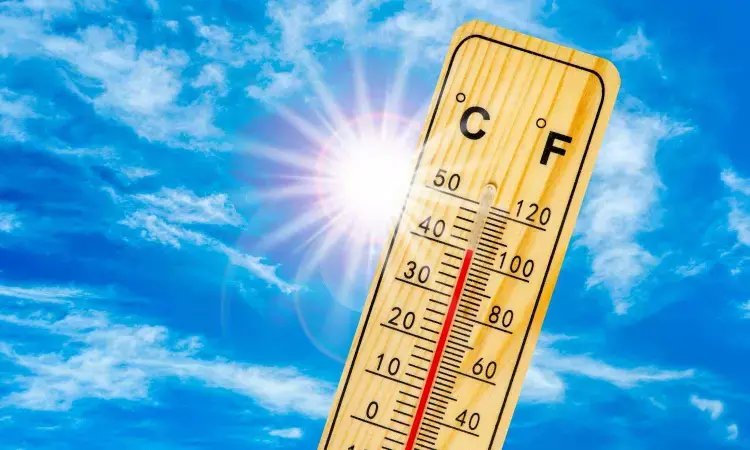- Home
- Medical news & Guidelines
- Anesthesiology
- Cardiology and CTVS
- Critical Care
- Dentistry
- Dermatology
- Diabetes and Endocrinology
- ENT
- Gastroenterology
- Medicine
- Nephrology
- Neurology
- Obstretics-Gynaecology
- Oncology
- Ophthalmology
- Orthopaedics
- Pediatrics-Neonatology
- Psychiatry
- Pulmonology
- Radiology
- Surgery
- Urology
- Laboratory Medicine
- Diet
- Nursing
- Paramedical
- Physiotherapy
- Health news
- Fact Check
- Bone Health Fact Check
- Brain Health Fact Check
- Cancer Related Fact Check
- Child Care Fact Check
- Dental and oral health fact check
- Diabetes and metabolic health fact check
- Diet and Nutrition Fact Check
- Eye and ENT Care Fact Check
- Fitness fact check
- Gut health fact check
- Heart health fact check
- Kidney health fact check
- Medical education fact check
- Men's health fact check
- Respiratory fact check
- Skin and hair care fact check
- Vaccine and Immunization fact check
- Women's health fact check
- AYUSH
- State News
- Andaman and Nicobar Islands
- Andhra Pradesh
- Arunachal Pradesh
- Assam
- Bihar
- Chandigarh
- Chattisgarh
- Dadra and Nagar Haveli
- Daman and Diu
- Delhi
- Goa
- Gujarat
- Haryana
- Himachal Pradesh
- Jammu & Kashmir
- Jharkhand
- Karnataka
- Kerala
- Ladakh
- Lakshadweep
- Madhya Pradesh
- Maharashtra
- Manipur
- Meghalaya
- Mizoram
- Nagaland
- Odisha
- Puducherry
- Punjab
- Rajasthan
- Sikkim
- Tamil Nadu
- Telangana
- Tripura
- Uttar Pradesh
- Uttrakhand
- West Bengal
- Medical Education
- Industry
Cold and Heat Exposure Linked to Increased Psychiatric Symptoms in Teens: JAMA

Researchers have found in a new study that ambiance temperature variations have a significant impact on psychiatric symptoms of adolescents. It was specifically observed that cold exposure in the Netherlands and heat exposure in Spain were strongly associated with greater mental health issues. A recent cohort study was conducted by Esmee E. and colleagues published in JAMA Network Open.
Climate change is known to influence mental health, but the exact association of ambient temperature and psychiatric symptoms during adolescence is far from well documented. The purpose of this study is to bridge that gap by the analysis of two European birth cohorts: the Generation R Study, conducted in the Netherlands, and the INMA Project, conducted in Spain. It recruited 9,898 women during pregnancy or shortly after birth, with children born between 2002 and 2006. The INMA Project recruited 2,270 pregnant women from Gipuzkoa, Sabadell, and Valencia, Spain, with children born between 2003 and 2008.
The study included individuals born from live singleton births with available outcome and exposure data. Daily ambient temperatures for the 2 weeks, 1 month, and 2 months leading up to the outcome assessment were estimated at a 100 × 100 m resolution using the UrbClim model. The main outcomes were internalizing, externalizing, and attention problems, as measured by the maternal-reported Child Behavioral Checklist for ages 6 to 18 years. Distributed lag nonlinear models assessed the relationships of temperature exposure with problem scores in each country and region.
Key Findings
• Participant Demographics: The study analyzed data from 3,934 participants in Generation R (mean age 13.6 years; 50% female) and 885 participants in INMA (mean age 14.9 years; 52% female).
• Temperature Ranges: In the Netherlands, daily temperatures ranged from −5.2 °C to 32.6 °C, while in Spain, they ranged from 3.3 °C to 33.9 °C.
• Psychiatric Symptoms: Mean square-root transformed scores were 2.0 for internalizing problems, 1.6 for externalizing problems and 1.5 for attention problems, in Generation R. For INMA, they were 2.4, 2.1 and 1.5, respectively.
Temperature and Mental Health Associations:
• Netherlands: Greater cumulative exposure to cold was associated with more internalizing problems. For instance, exposure of 5.5 °C over a 2-month period was associated with a 0.76 increase in square-root points (95% CI, 0.20-1.32).
• Spain: Cumulative exposure to heat was associated with more attention problems. A 21.7 °C exposure over a 2-month period was associated with a 1.52 increase in square root points (95% CI, 0.39-2.66).
Researchers concluded that ambient temperature exposure has a strong association with the psychiatric symptoms of adolescents. Low ambient temperature in the Netherlands and high ambient temperature in Spain were associated with higher cases of mental health issues, and hence a region-specific approach to counter the adverse mental health effects of climate change on adolescents is required.
Reference:
Essers E, Kusters M, Granés L, et al. Temperature Exposure and Psychiatric Symptoms in Adolescents From 2 European Birth Cohorts. JAMA Netw Open. 2025;8(1):e2456898. doi:10.1001/jamanetworkopen.2024.56898Dr Riya Dave has completed dentistry from Gujarat University in 2022. She is a dentist and accomplished medical and scientific writer known for her commitment to bridging the gap between clinical expertise and accessible healthcare information. She has been actively involved in writing blogs related to health and wellness.
Dr Kamal Kant Kohli-MBBS, DTCD- a chest specialist with more than 30 years of practice and a flair for writing clinical articles, Dr Kamal Kant Kohli joined Medical Dialogues as a Chief Editor of Medical News. Besides writing articles, as an editor, he proofreads and verifies all the medical content published on Medical Dialogues including those coming from journals, studies,medical conferences,guidelines etc. Email: drkohli@medicaldialogues.in. Contact no. 011-43720751


